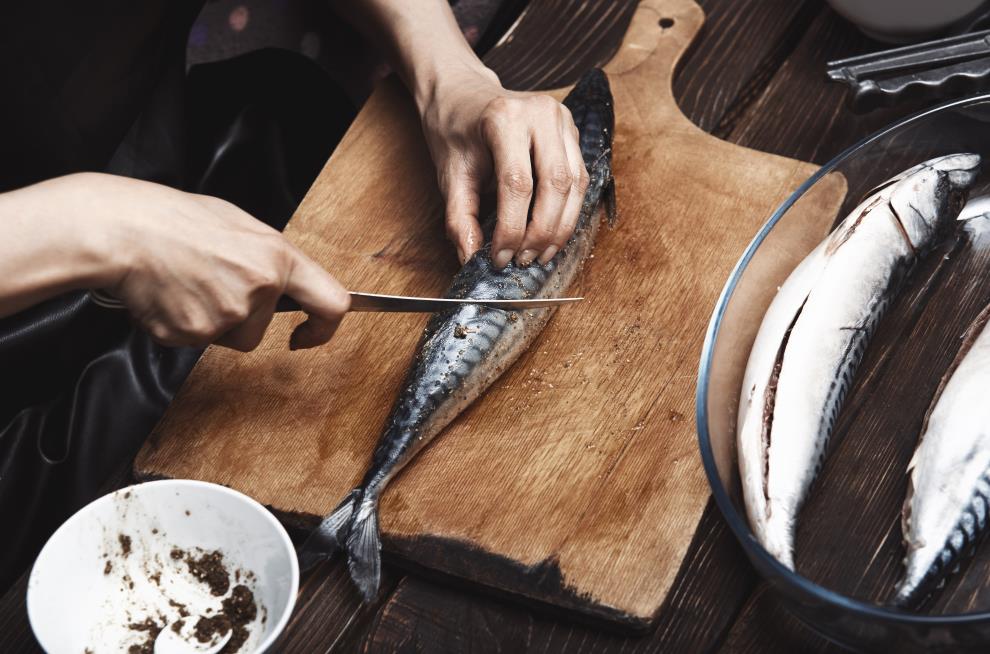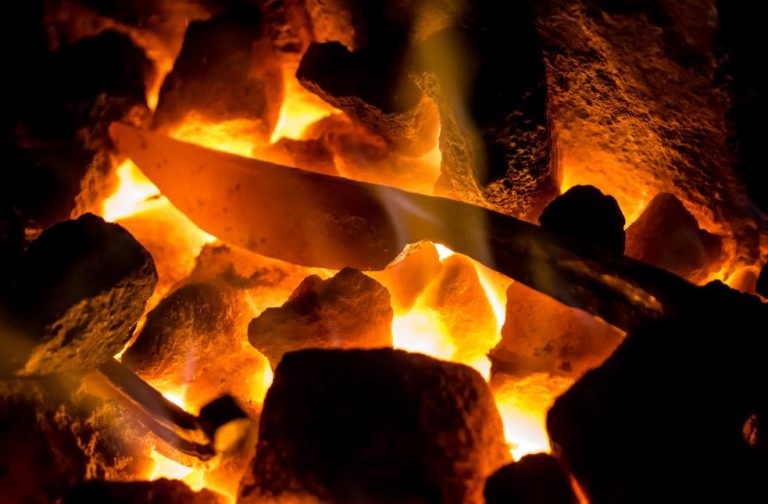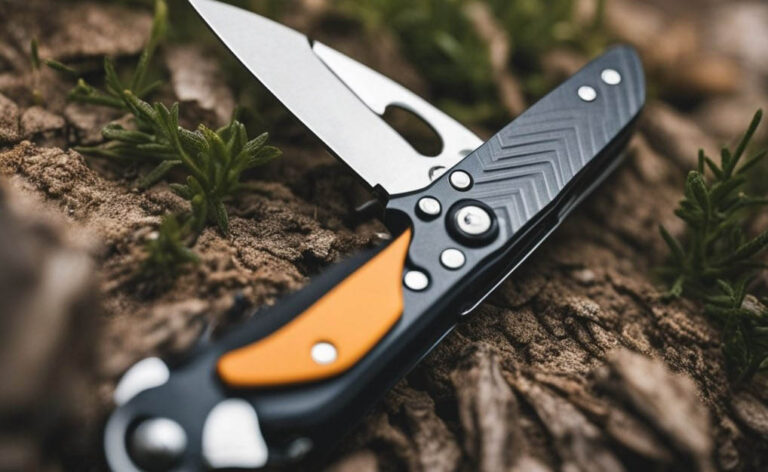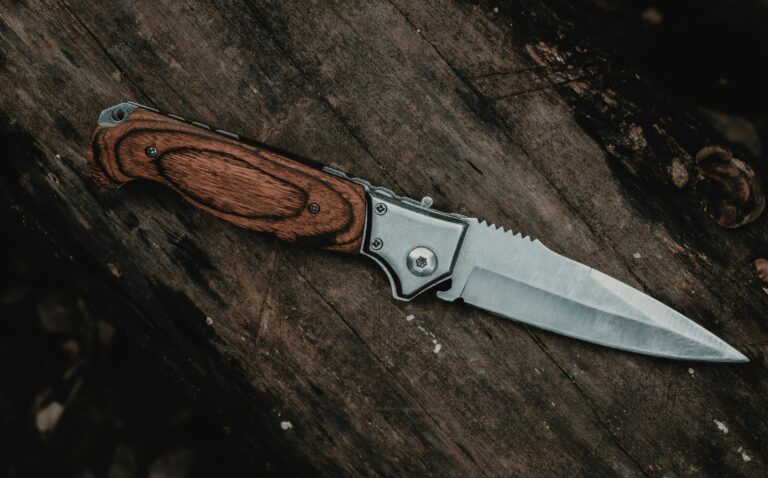All knives thrive and perform better with care. Some need more than others. In addition to what every blade demands from its user, the care needs are a tad bit more with carbon steel knives. In exchange for the extra upkeep, carbon steel knife users benefit from a sharp edge that cuts for long periods.
This guide will go over the essential carbon steel knife care practices, from cleaning to sharpening to storing.
What are carbon steel knives?
As obvious as it is, carbon steel knives are blades made from carbon steel as their main alloying element. These knives have traits that benefit their users in many ways but lack in certain areas. The most noticeable is the corrosion resistance.
Why proper maintenance is important
Although carbon steel knives provide their users with superb edge retention, sharpness, and easy sharpening, they will slowly degrade without proper upkeep. Carbon steel knives develop a patina over time that protects the blade from further oxidation but can rust quickly if maintenance is overlooked.
Chromium is the most needed element that enables the steel to resist corrosion. Since carbon steel knives don’t have any or only insignificant amounts, they are more susceptible to rust than others. If someone wants to use their carbon steel knives for many years, utilizing proper maintenance methods is essential.
The care of carbon steel knives isn’t only to prevent rust. Because carbon steel knives are usually harder, they are susceptible to chipping. The chipping usually occurs in very tiny pieces – sometimes invisible to the eye. Regardless of the size, it can be fixed using a sharpening stone. Read through the rest to find out how to fix chipped carbon steel knives.
Will carbon knife rust
As mentioned above, carbon steel doesn’t have adequate amounts of chromium or none at all. Because of that, oxygen from the surrounding air bonds with the iron in the steel, forming a patina. If there’s also moisture involved, this can turn into rust.
Undoubtedly, no one would want to see their knives rusting, but it’s vital to differentiate rust from patina.
Rust vs. patina
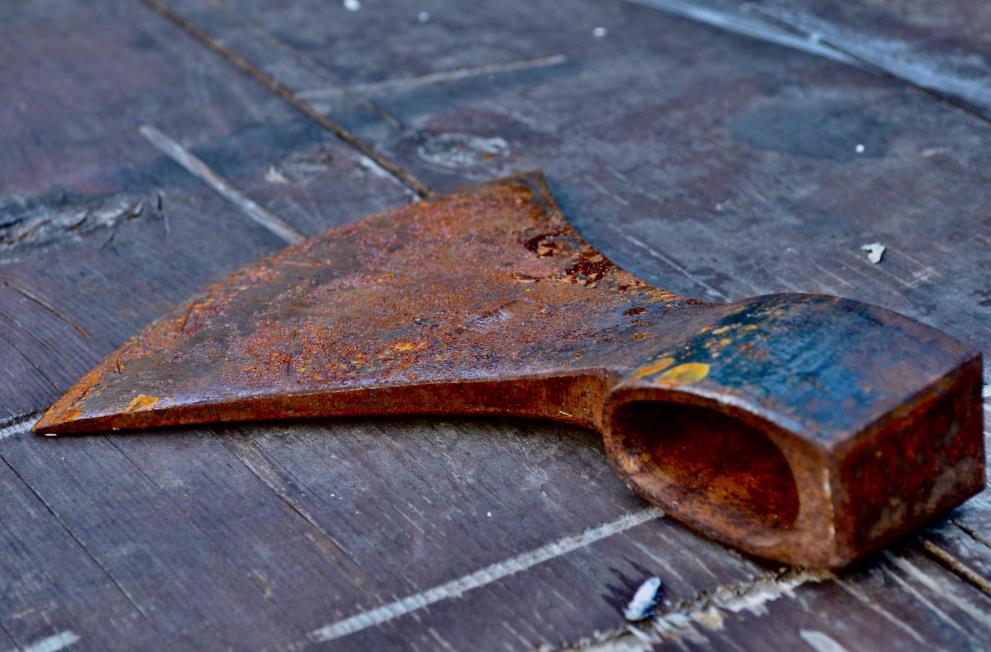
Patina is a thin layer of ferric oxide. It’s a naturally occurring protective layer that stabilizes the surface and prevents further oxidation. On the other hand, rust is iron oxide continuing to eat up all the available metal until none is left.
Rust is destructive to the blade, appearing reddish-brown. Patina typically appears in grey or black and isn’t harmful to carbon steel or humans. A lot more chemical reaction goes into how patina and rust form, but this is as simple as we can compare rust and patina.
Forcing a patina
Since patina will form on carbon steel knife blades sooner or later, forcing it ensures the knife develops it in a way that doesn’t hurt the blade. You can think of this as a controlled fire.
There are several ways to force a patina on a carbon steel knife. Here is a simple, step-by-step guide on how.
- Wrap the knife’s blade only with a paper towel soaked in white vinegar. You can use mustard as a substitute for white vinegar.
- Cover the blade using plastic stretch film and let it sit for about 15 minutes or so.
- Uncover the plastic stretch film and rinse the white vinegar off the blade.
Forcing patina on the entire blade isn’t recommended if there’s already some patina. Using patches and applying the white vinegar or mustard on the areas without patina will result in a more even surface.
How to remove rust off the knife?
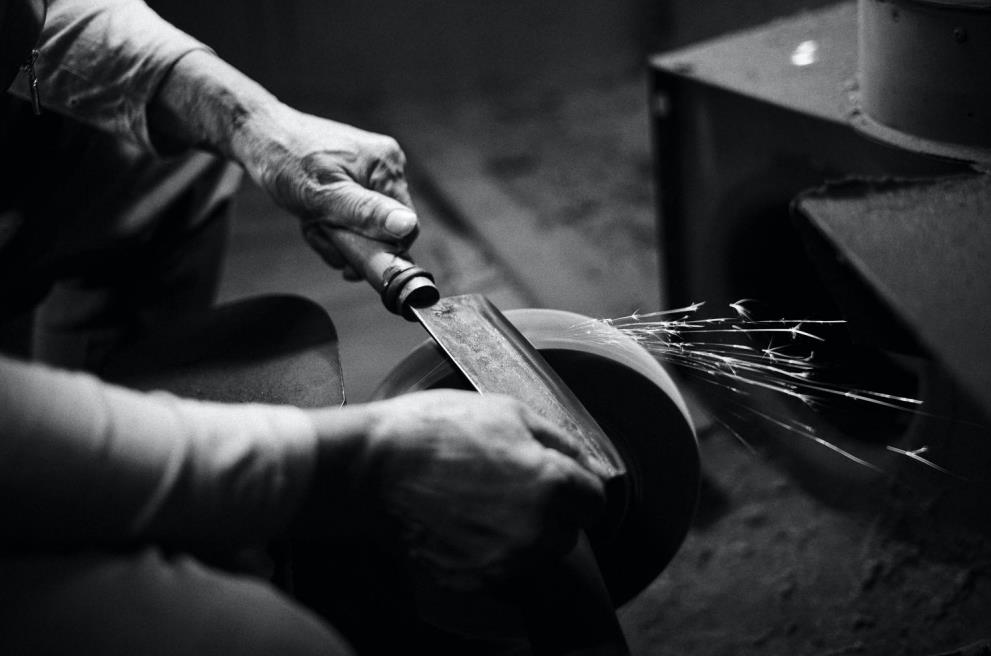
Rust forming on a carbon steel knife can happen to the best of us, especially to the blades that we don’t use as often. When that happens, it’s possible to remove rust without damaging the knife.
There are plenty of household items that work efficiently to remove rust. Here are the easiest ways to remove rust from a carbon steel knife blade at home.
- Baking soda: Mix baking soda with warm water to create a thick paste. Spread the paste over the blade, ensuring all the rusty spots are covered. After 60 to 90 minutes, rub the blade gently with fine steel wool to remove rust.
- White vinegar: This works the best with knives that don’t have as much rust built up. Submerge the knife’s blade in white vinegar overnight. Make sure to keep the handle away from it. Use a wire brush or fine steel wool to scrub the rust off the blade.
- Salt and lemon: Squeeze a little lemon juice over the blade and generously sprinkle salt. After the salt sticks, squeeze more lemon juice and let it sit for an hour. If the rust isn’t too stubborn, use a lemon rind to scrub. This will prevent unwanted scratches. If it doesn’t do a good job, use a wire brush or fine steel wool instead.
- Citric acid: Add two to three tablespoons of citric acid to one to two cups of hot water. Like the white vinegar solution to remove rust, submerge the knife’s blade in the mixture overnight. The next morning, cleanse the rust from the knife.
- Rust eraser: Using a rust eraser will get the job done if the above remedies don’t work. However, not every rust eraser works on knives. Some of the chemicals found in rust removers are too harsh for knife blades. Use one that’s appropriate for knife blades and use it according to the product.
Regardless of the method utilized for removing rust from carbon steel blades, hand-wash the knife after scrubbing and dry it thoroughly. Don’t let any of the mixtures on the blade longer than necessary. Otherwise, it can damage the knife.
Buy Wholesale Knives and Start Scaling up with Us Today
Contact us and connect with a sales rep to get a free quote.
Keeping it sharp
Sharp knives are always safer to use, and keeping blades that way is vital to protect them from damage. A sharp knife won’t require as much force to cut, giving an easy time for both the user and the blade.
How to sharpen a knife?
Like all knives, carbon steel knives appreciate being sharpened with a whetstone. Depending on the knife’s steel and properties, using water stone or oil stone works the best. The goal with sharpening stones is to remove material from the knife’s edge to expose a new, sharper surface – here is how.
Step by step how-to
- Start with the coarser side of the sharpening stone. Use lubricant to moist the surface. Water stones require water; oil stones need honing oil or mineral oil.
- Stroke the knife’s edge against the sharpening stone at the right angle. The blade should be sharpened from the tip to the heel and back. This works the best with western-style knives. Japanese knives have a more acute angle that sharpens better by focusing on different parts throughout sharpening. For example, from the heel to the belly to the tip.
- Switch to sharpening the opposite side when the burr appears.
- Once both sides are sharpened, flip the sharpening stone or move to a higher grit stone and polish the edge.
Tips
- Single bevel knives require only one side to be sharpened. Sharpen the side the edge is ground.
- If maintaining the same angle is challenging, using an angle guide can help. Some sharpening stones already come with one, but they can be purchased individually.
How to hone a knife?
Honing will keep the sharp edge sharper. It’s an easy way to make knives cut a tad bit better.
Step by step how-to
- Keeping the honing rod in your non-dominant hand, place the knife’s heel on it.
- Pull the blade towards yourself and simultaneously move the honing rod away.
- Do the same for both sides a few times. This honing technique works the best when done regularly in between meals.
or
- Hold the honing rod’s tip on a stable surface.
- Move the knife from the heel to the tip about 20 to 25 times on each side. This honing technique is much better for those that don’t hone their knives frequently.
Honing vs. sharpening
Although honing will make the knife cut better, it doesn’t work the same as actually sharpening blades. For a knife blade to be sharpened, there needs to be a new cutting edge replacing the old one, and sharpening stones deliver just that. Each stroke on the sharpening stone removes material from the knife’s edge and exposes a new surface. In a way, you get a brand new cutting edge that’s as sharp as the first day – if not sharper.
On the other hand, honing doesn’t create a new edge. Instead, it fixes the tiny rugged edges and makes it straight. This process makes the knife sharper but all will need sharpening with a whetstone eventually.
All knives get dull, and the more we use them, the faster this happens. Aside from the edge losing its shape, which honing can fix, there become microscopic chips. If you’ve noticed your knife cutting more like a bread knife where you need to pull and push the blade, this is the cause. The toothy edge can’t be fixed with honing.
When a knife gets as dull as this, it requires a sharpening stone to shed material from the cutting edge and form a new one using a whetstone.
How to repair chipped knives?
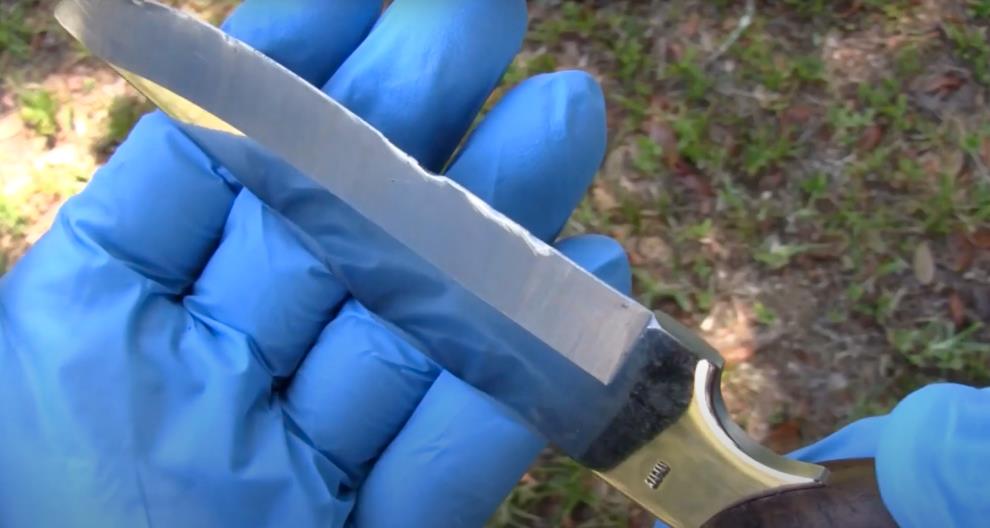
As briefly mentioned throughout this article, carbon steel knives are more sensitive to chipping. When this happens, it doesn’t mean the knife is now useless. By following a similar technique to sharpening, the chipped edges can be fixed.
However, fixing a chipped edge requires a more rigorous time on the sharpening stone. You’ll need to remove material from the edge until it reaches where the knife has chipped. That said, the coarsest available sharpening stone will repair a chipped blade faster. Luckily, carbon steel knives tend to be easier to sharpen, so fixing a chipped edge becomes even quicker. Here is how to fix a chipped carbon steel knife.
- Hold the knife’s edge at the appropriate angle and stroke the entire blade on the sharpening stone.
- Depending on the severity of the chip, this will take many minutes to just a few.
Fixing a chipped edge removes a lot of material from the blade. Because of this, an experienced sharpener can make the blade’s cutting edge flatter. Although it’s not recommended for beginner sharpeners to fix chipped edges, tiny bitty chips can be repaired as if the blade is getting sharpened.
Cleaning and storing
So far, we’ve discussed that carbon steel knives can rust and chip. These won’t happen – at least not as often – when they are kept clean and stored correctly.
How to properly clean a carbon steel knife?
Cleaning carbon steel knives is no different than any other knife. Hand-wash the blade using dish soap and scrub it with a sponge. The dishwashers are hazardous for not just carbon steel knives but any. The high heat and chemicals can wear down the handle fast and oxidize the blade.
While cleaning a knife is pretty typical, there are a few important things everyone needs to do with carbon steel knives. The knife should be cleaned shortly after use. Although rinsing and drying the blade is advised, simply drying it with a clean cloth when not using it or in between tasks contributes to the lifespan of carbon steel knives.
After cleaning the knife, thoroughly drying the blade is vital. Letting the knife air-dry will oxidize the blade. Also, coating the blade with food-grade mineral oil when storing is highly recommended. This creates a barrier between the blade and surrounding air that prevents further oxidation. The use of mineral oil isn’t limited to knife blades. It’s also a great tool to keep wooden cutting boards alive.
Once the blade is clean, dry, and shined with oil, there is one crucial thing to do when away from the knife – here is how to properly store carbon steel knives.
How to store a carbon steel knife

Surprisingly, incorrectly storing carbon steel knives is the leading cause of damage, followed by using them for purposes they aren’t intended for.
The best storage method for carbon steel knives is using magnetic blocks or strips. The regular knife blocks can chip the blade unexpectedly due to the friction when putting in and out. Unless you’re extra careful every time, knife blocks other than those without magnets aren’t recommended.
Any knife storage method that keeps the blade stable without touching others works fine. Think of magnetic strips, in-drawer trays with separators for each blade, under-cabinet holders, and cases. Though some might require the user to do some modification in the kitchen, appropriately storing carbon steel knives is essential to keep them and the users safe.
With pocket knives, it’s best to keep them out of reach in their individual sheaths.
Dos and don’ts of carbon steel knife care
Now that we’ve covered how to remove rust, sharpen, clean, and store carbon steel knives, here are additional care tips as this article’s final part.
- Do wipe the blade dry in between tasks. For example, dry the blade before stirring the pot.
- Don’t use excessive force when cutting with carbon steel knives.
- Store carbon steel knives with mineral oil coated on the blade and ensure it doesn’t touch other cutlery.
- Don’t wash carbon steel knives in the dishwasher. Always hand-wash using dish soap and warm water.
Undoubtedly, carbon steel knives demand more from the end-user. Heat treating the steel and constructing the blade right is just as important to produce a knife that performs adequately.
LeeKnives is a Chinese knife manufacturer with three decades of experience handling various knives using different steels. Contact us to see the services we offer to wholesalers, entrepreneurs, and dropshippers.
